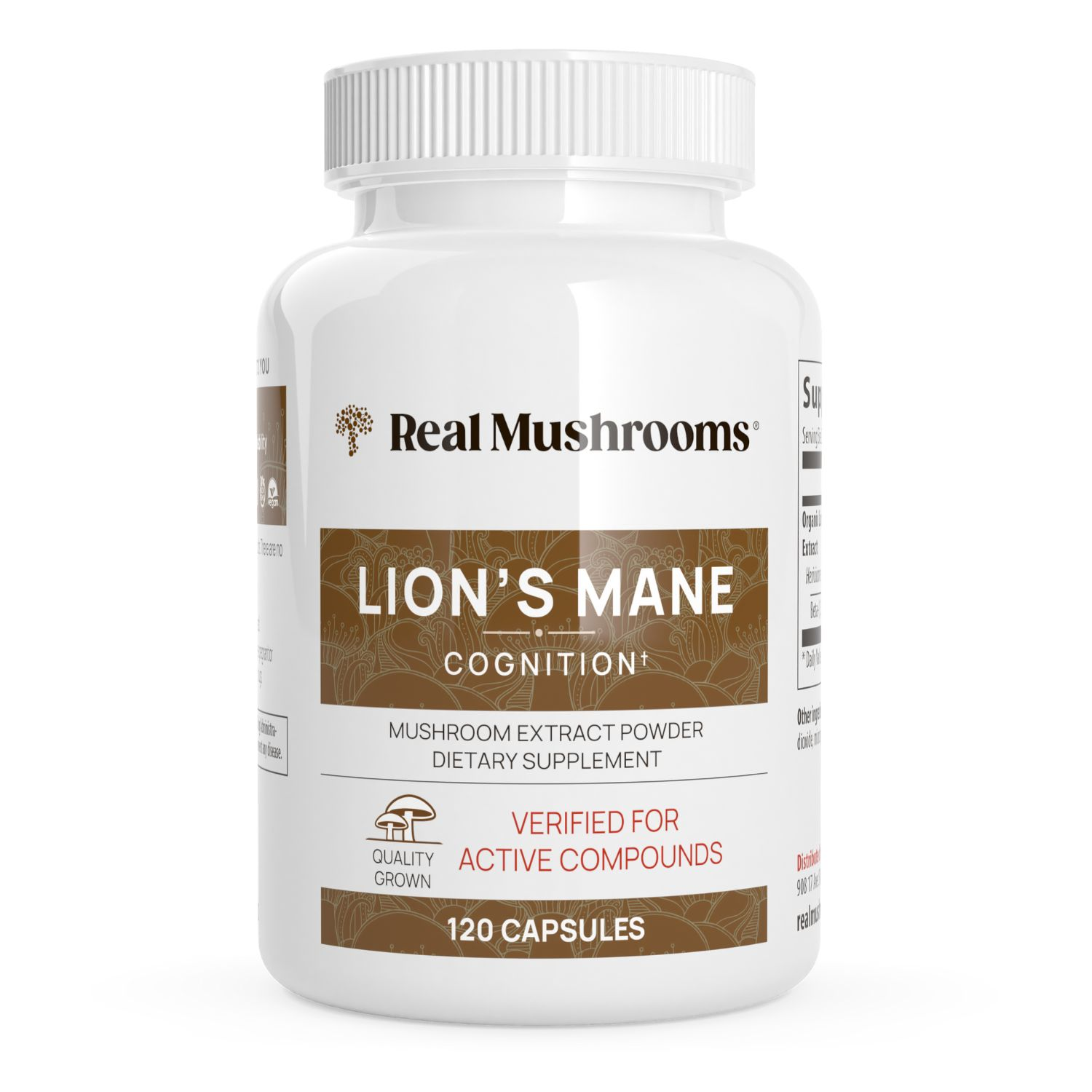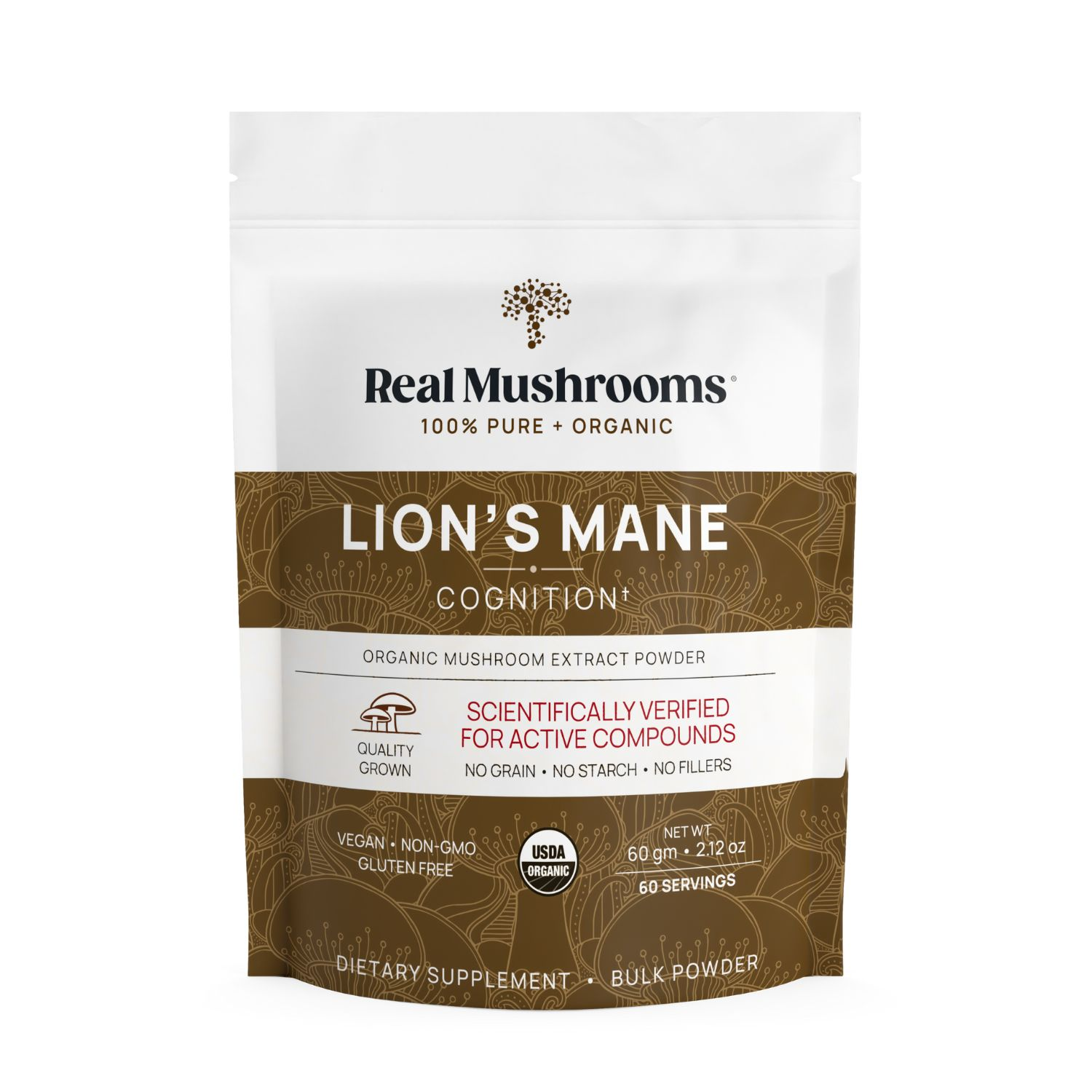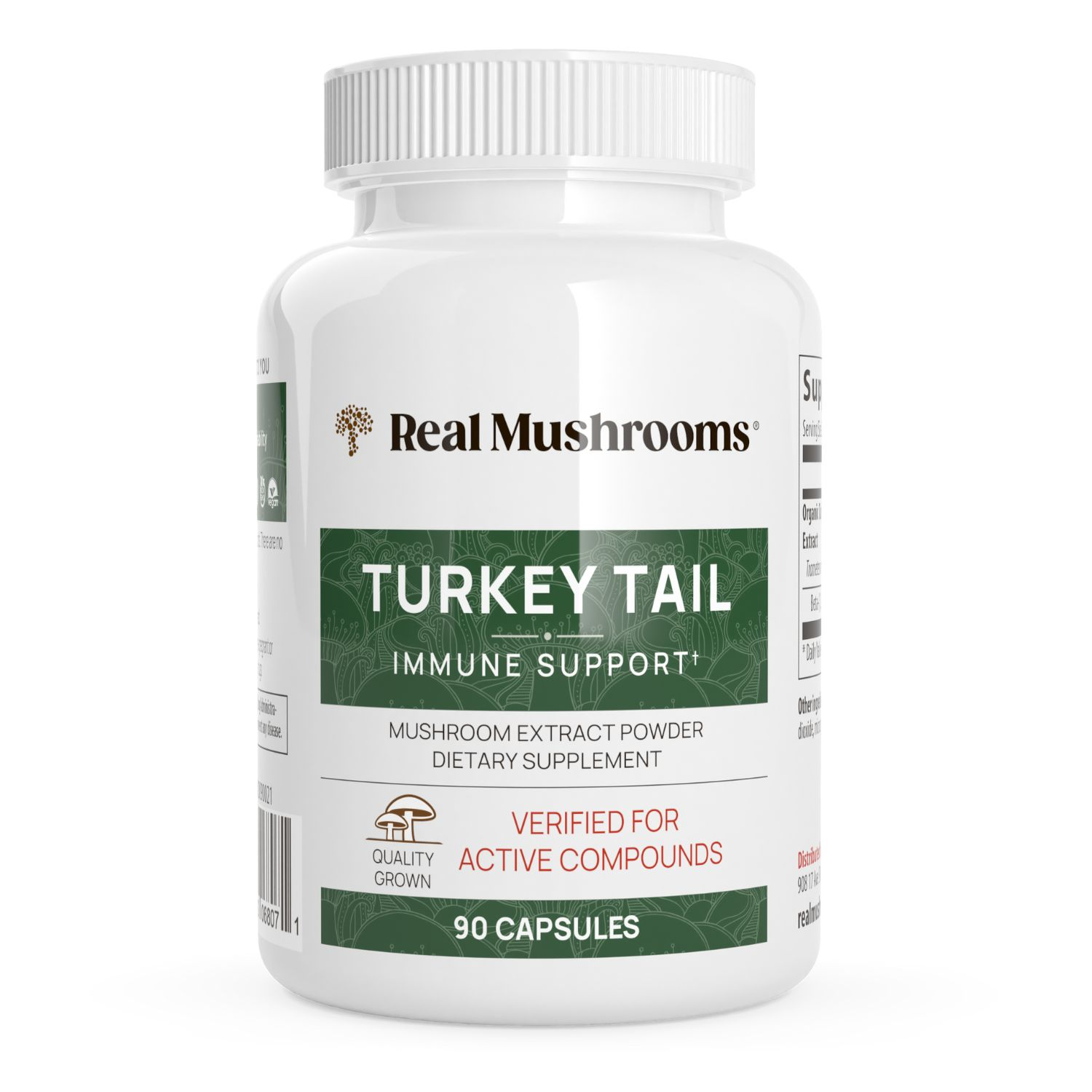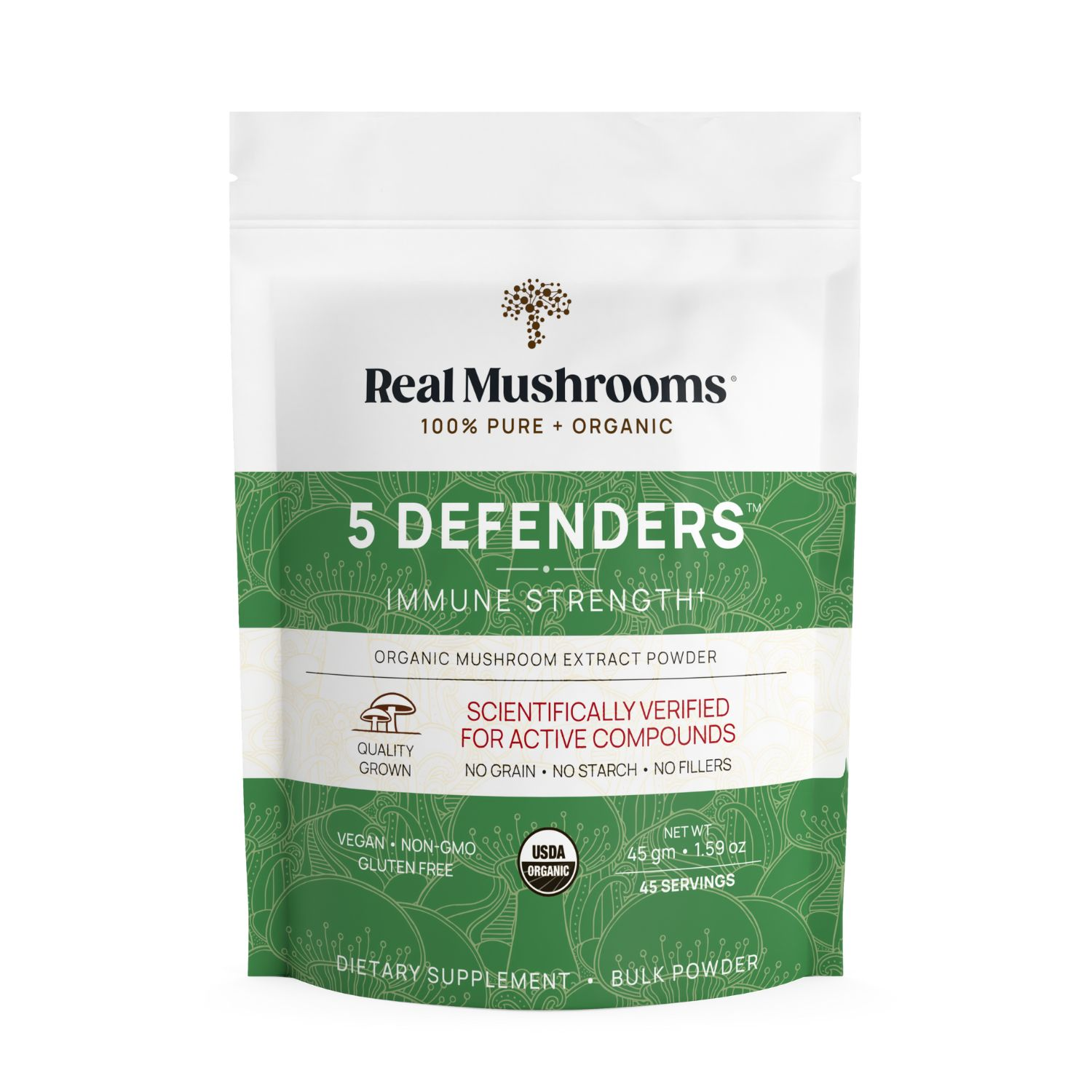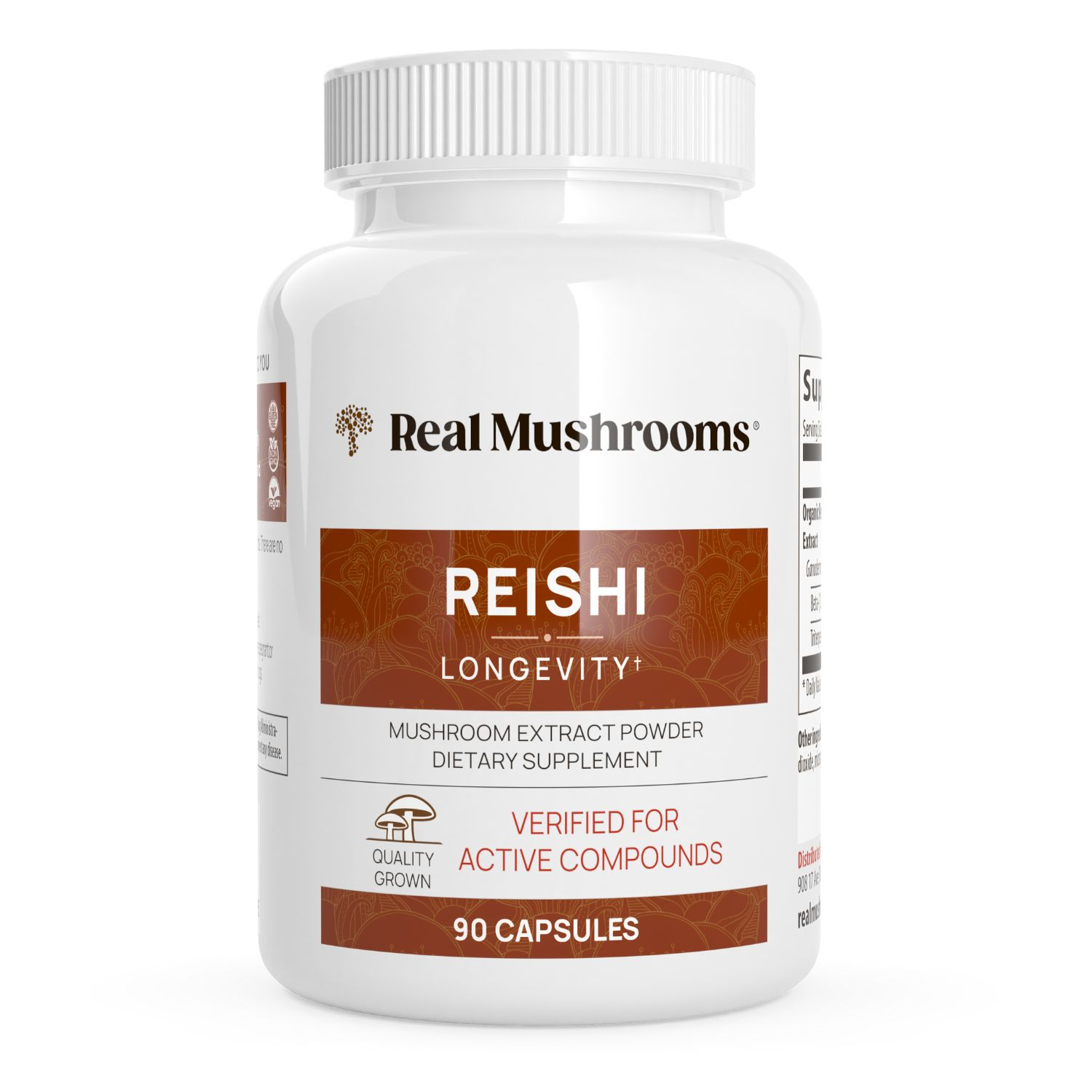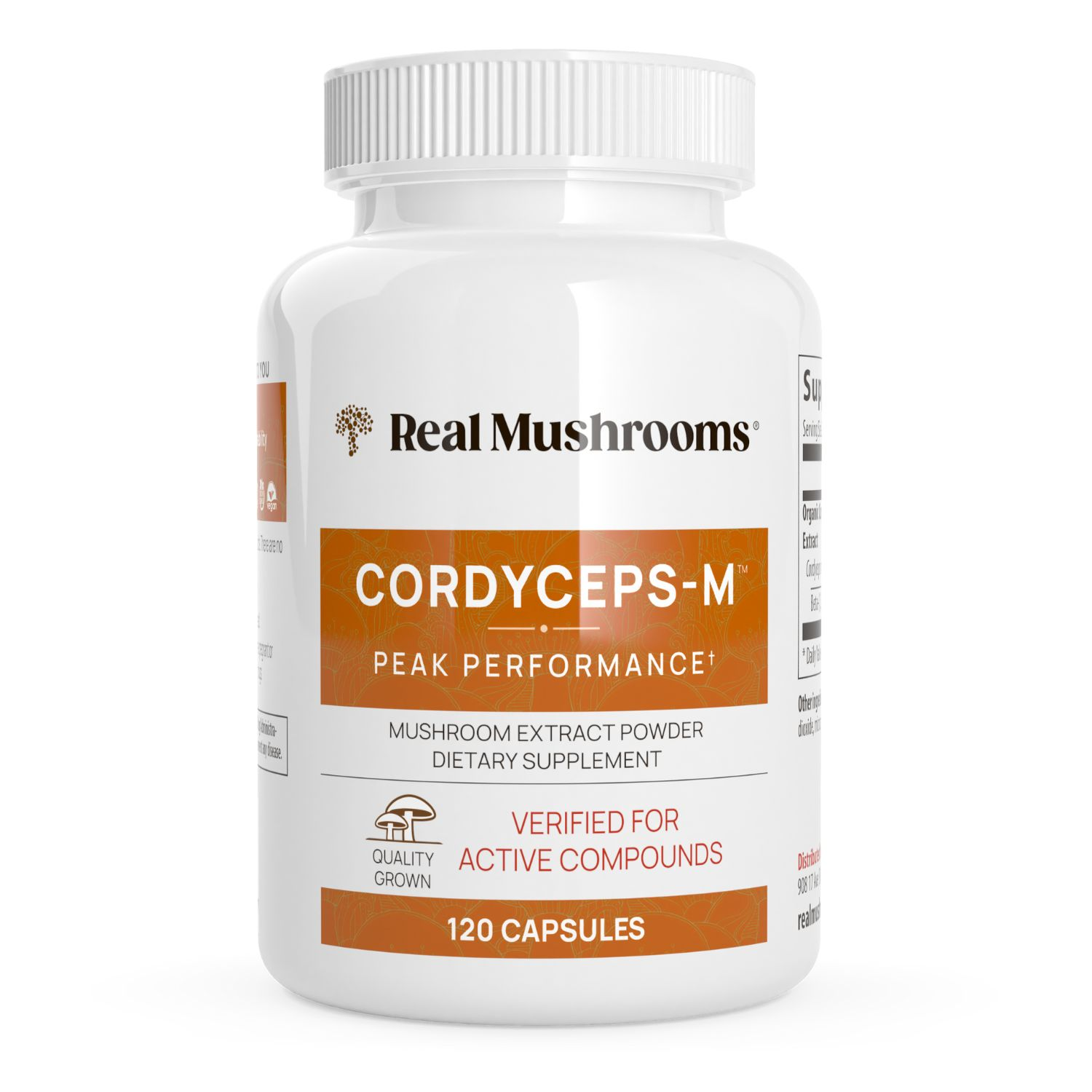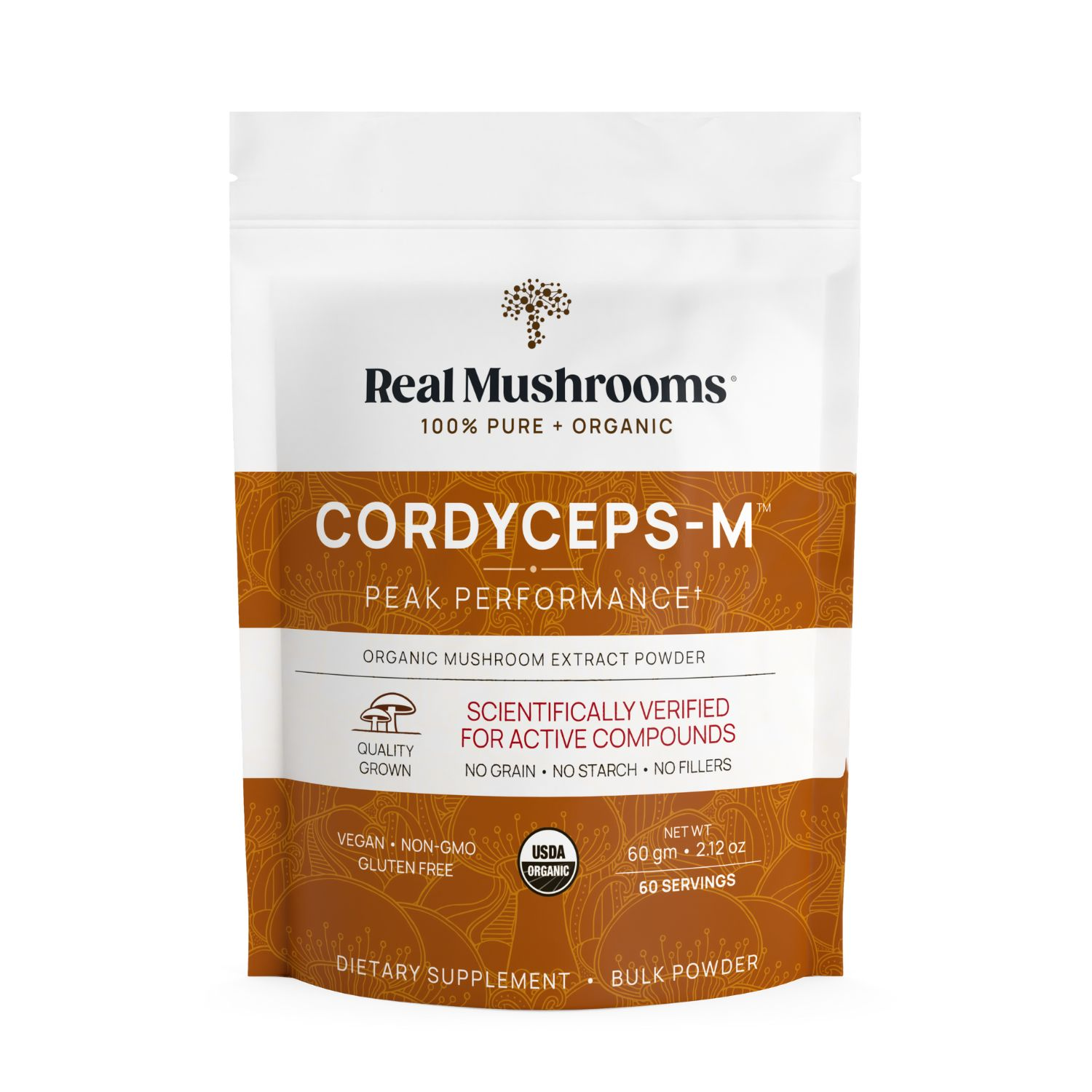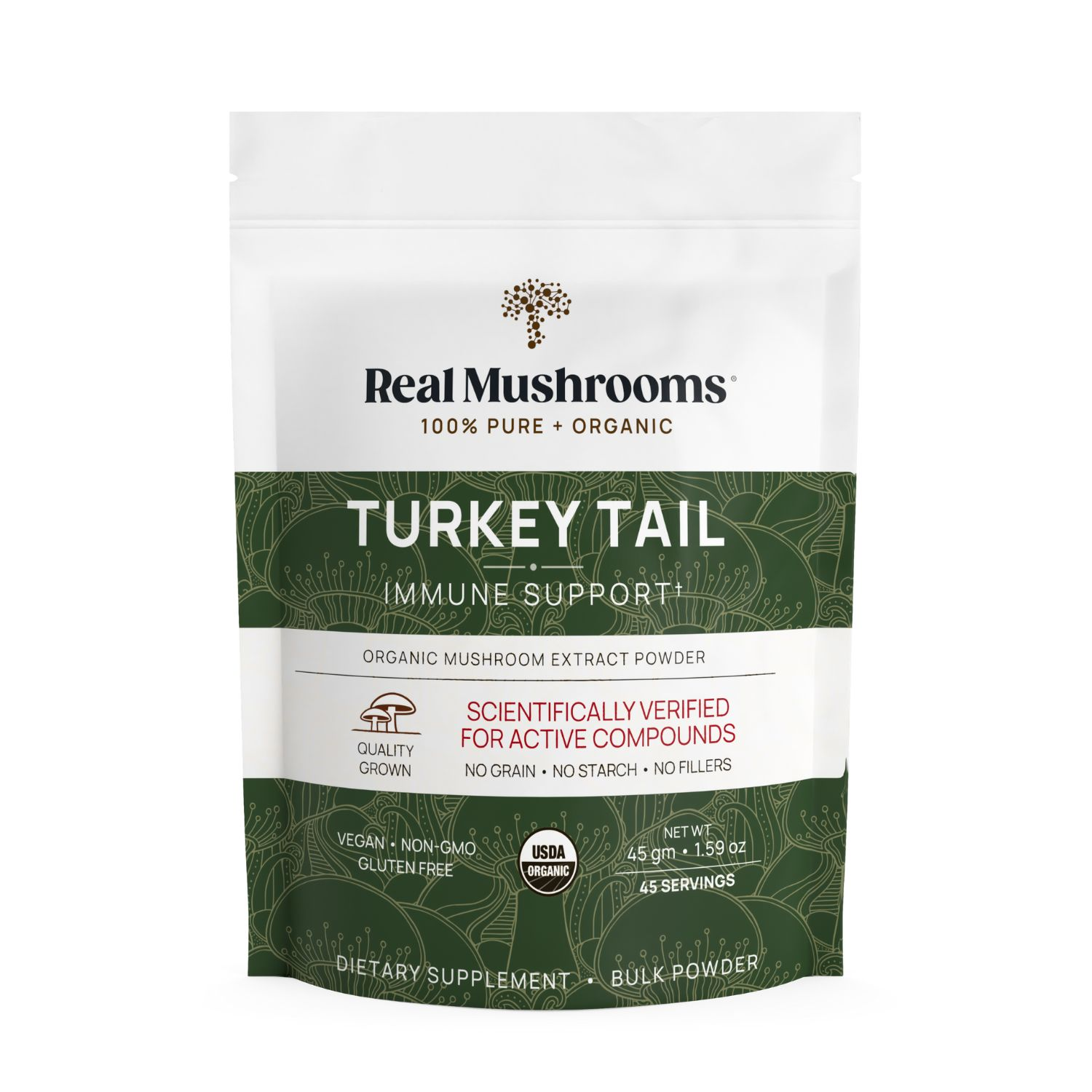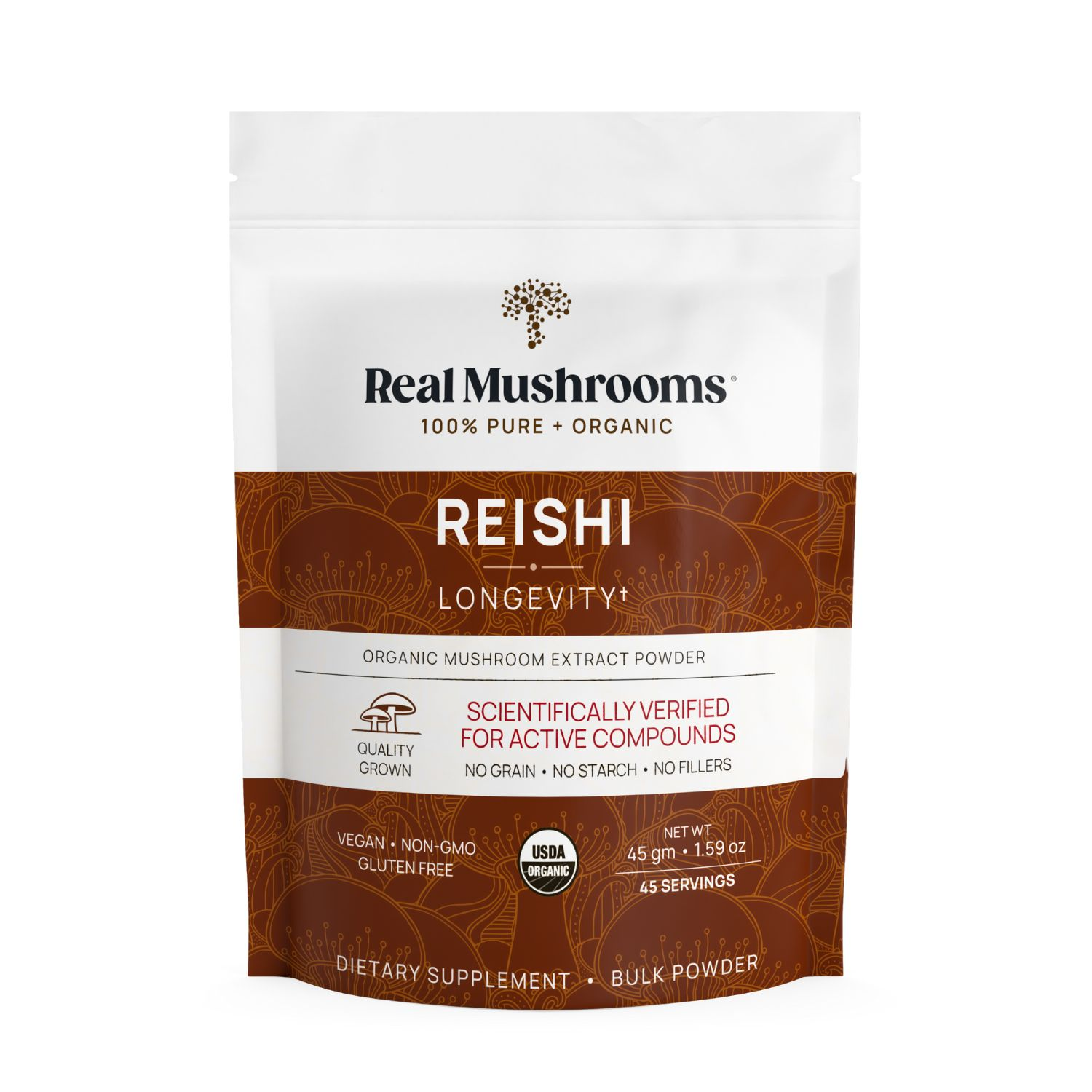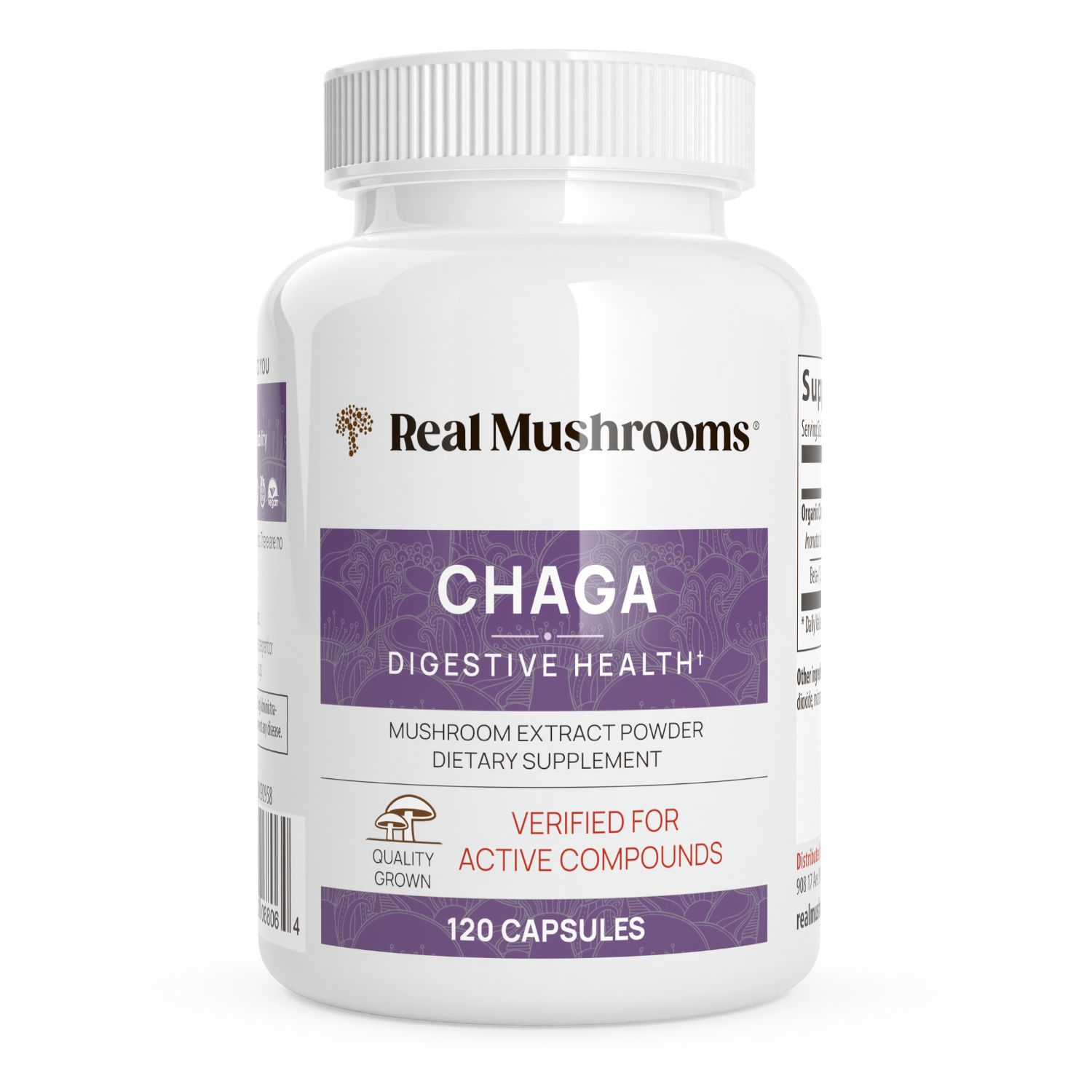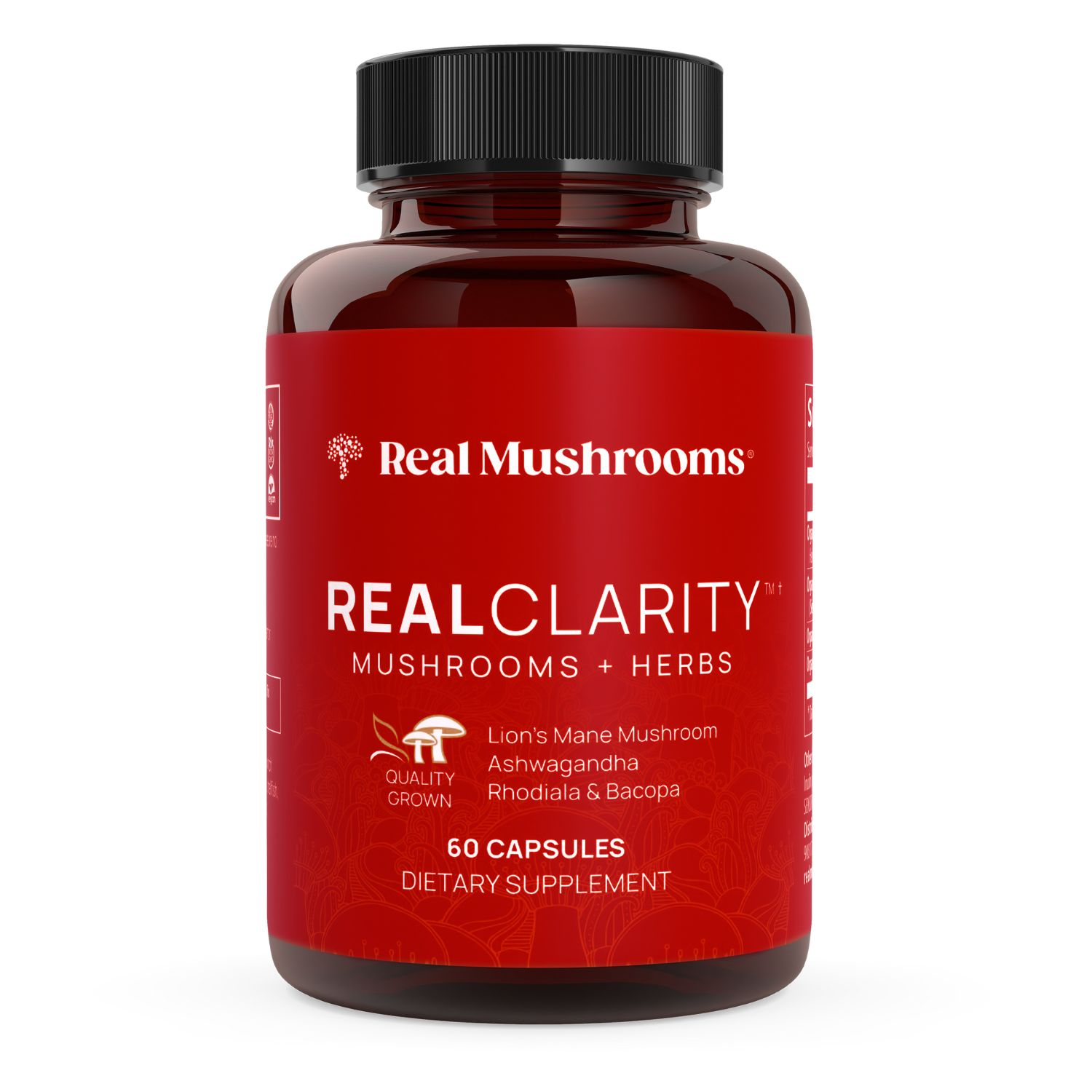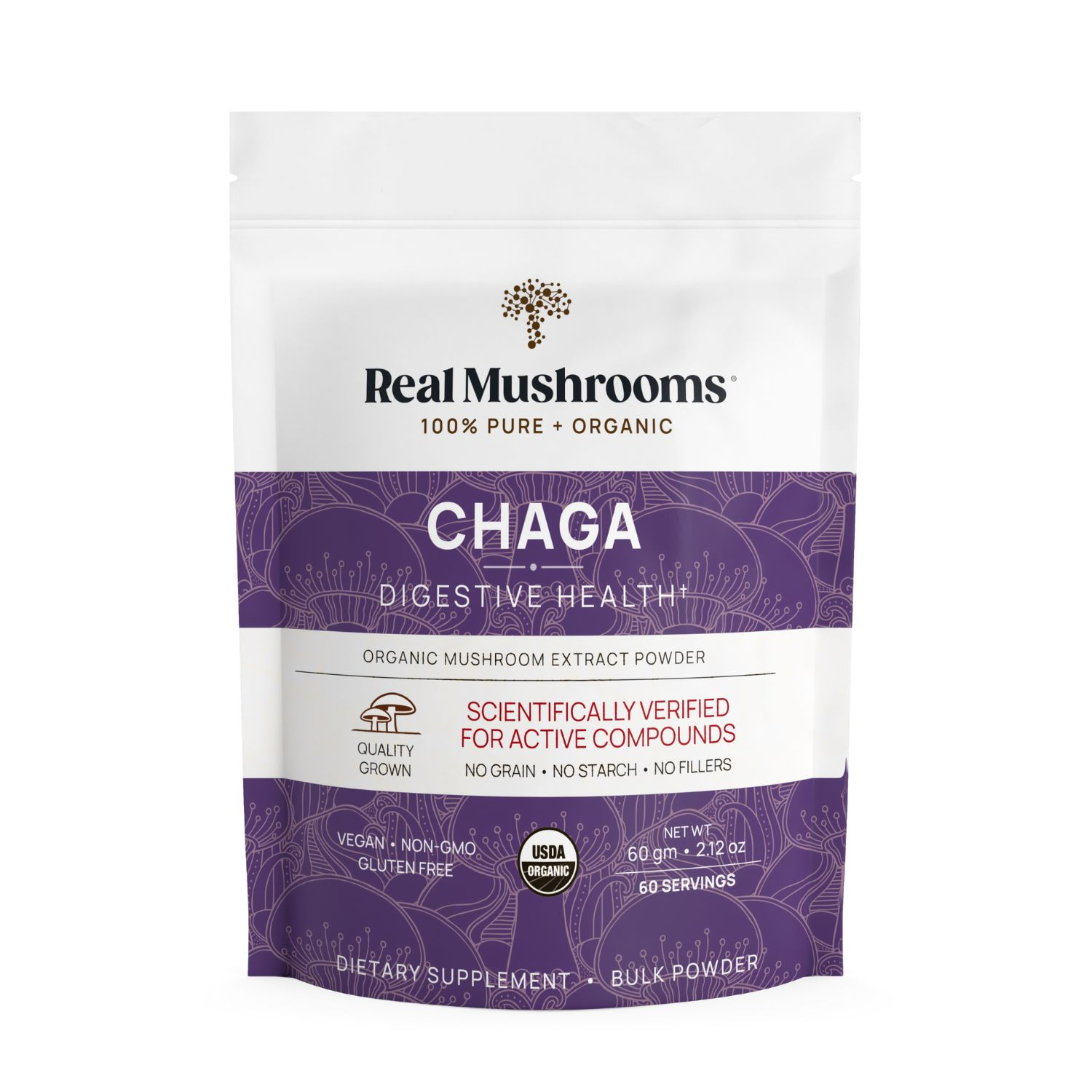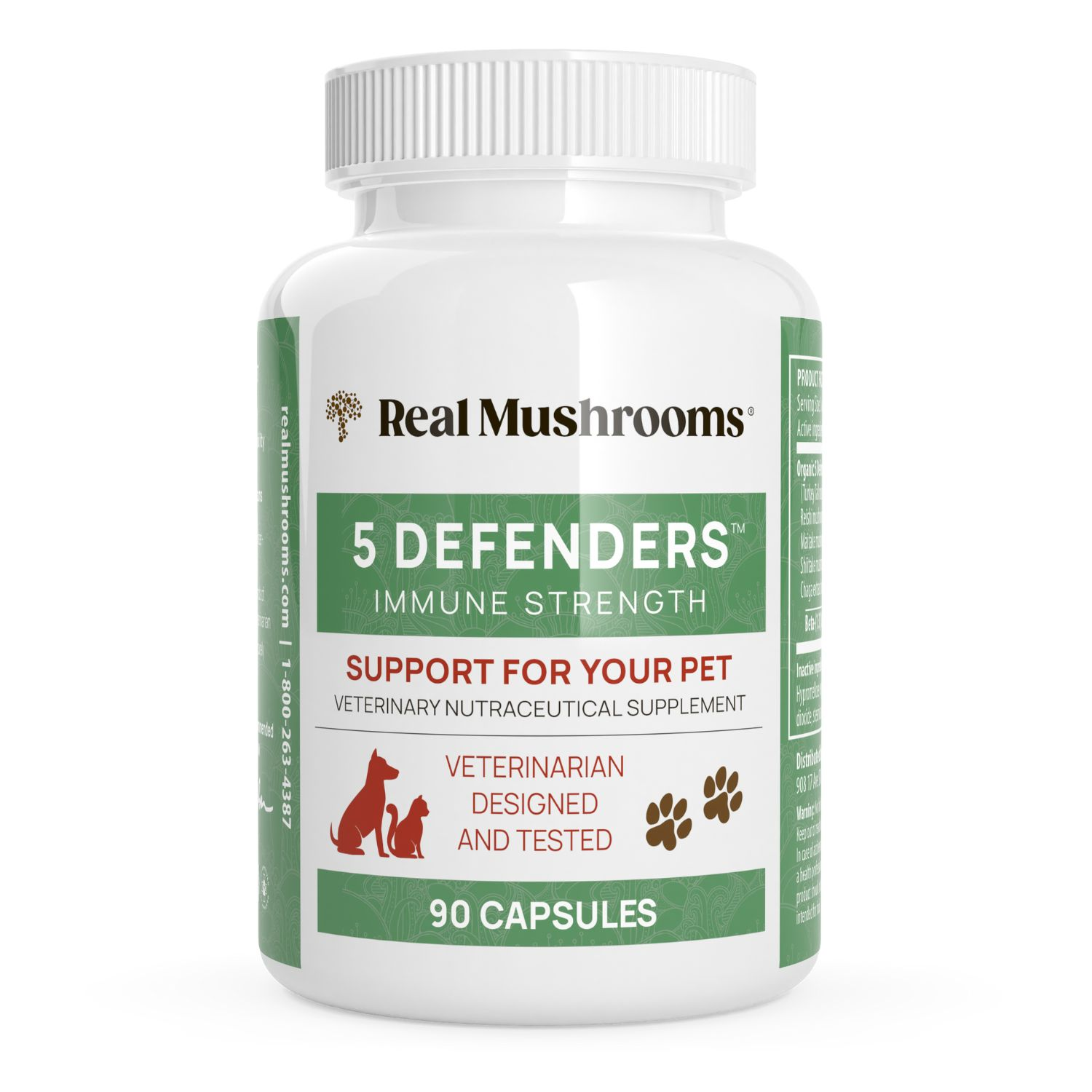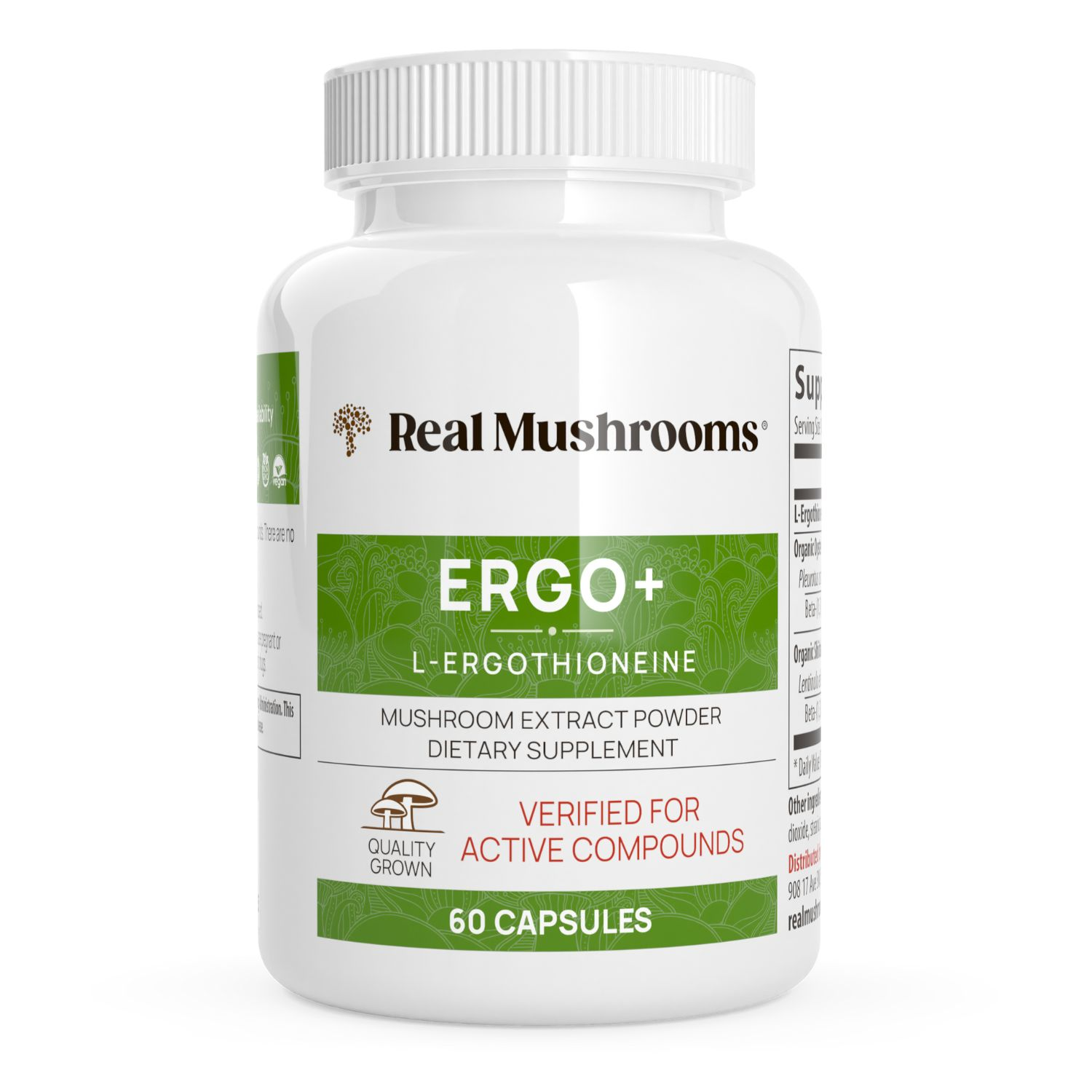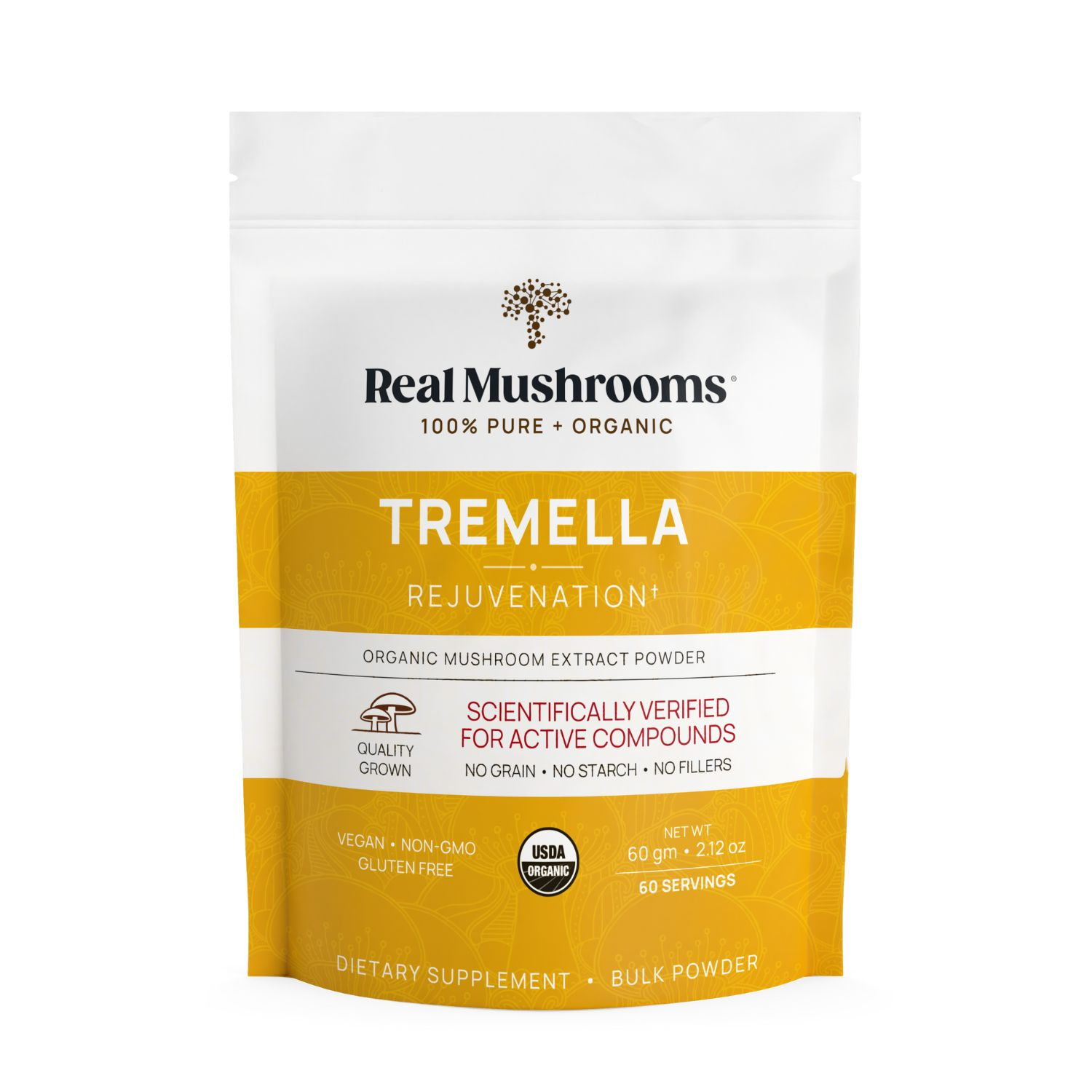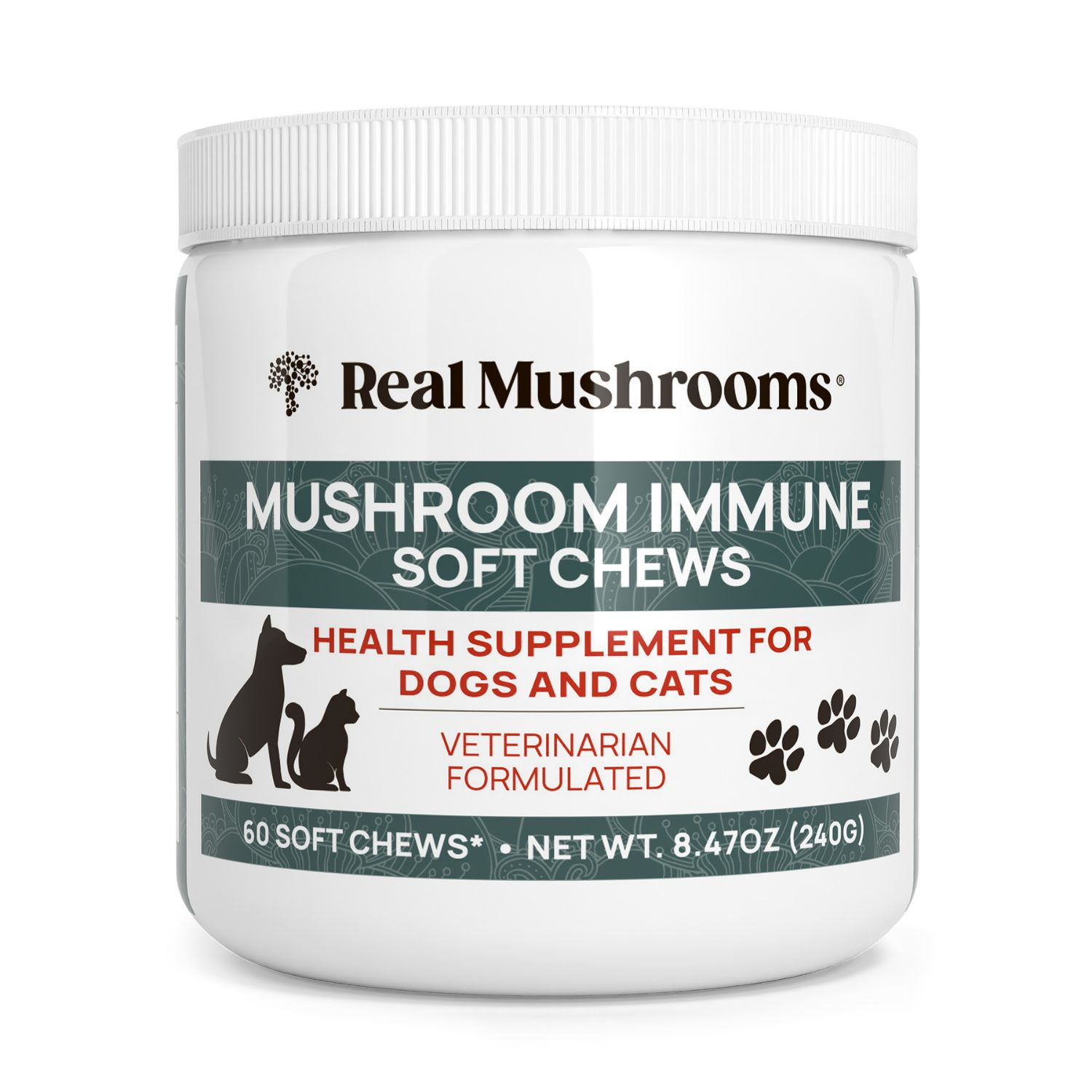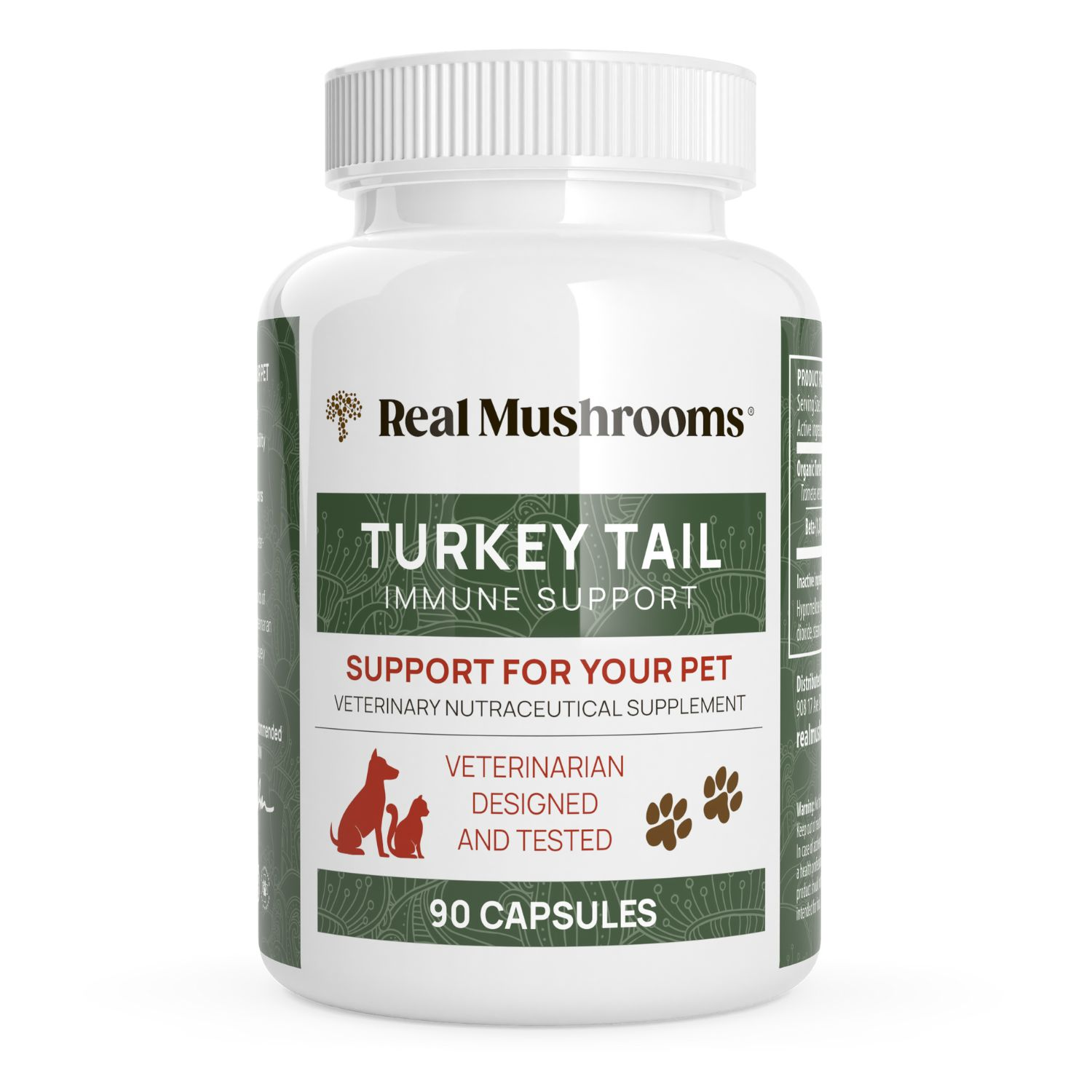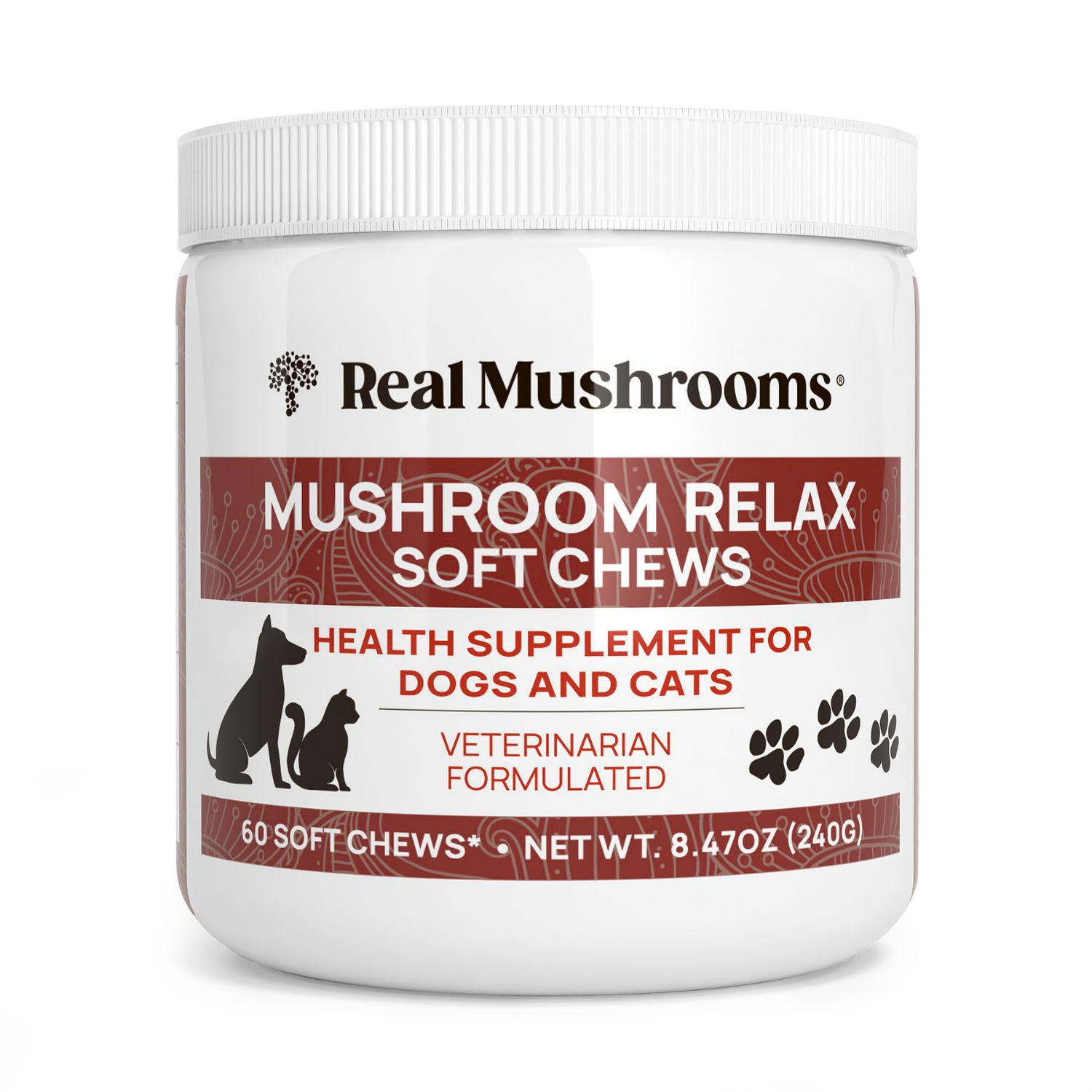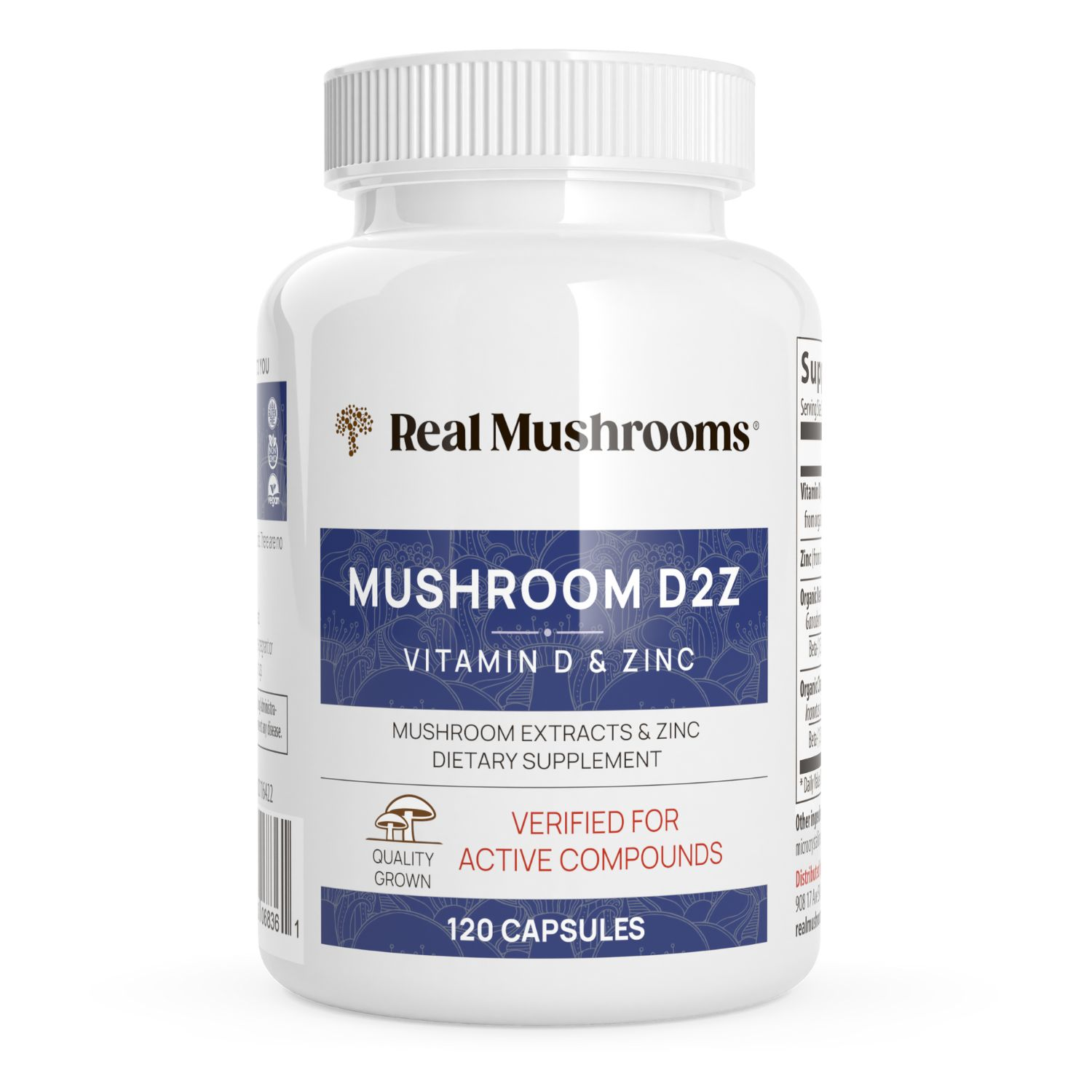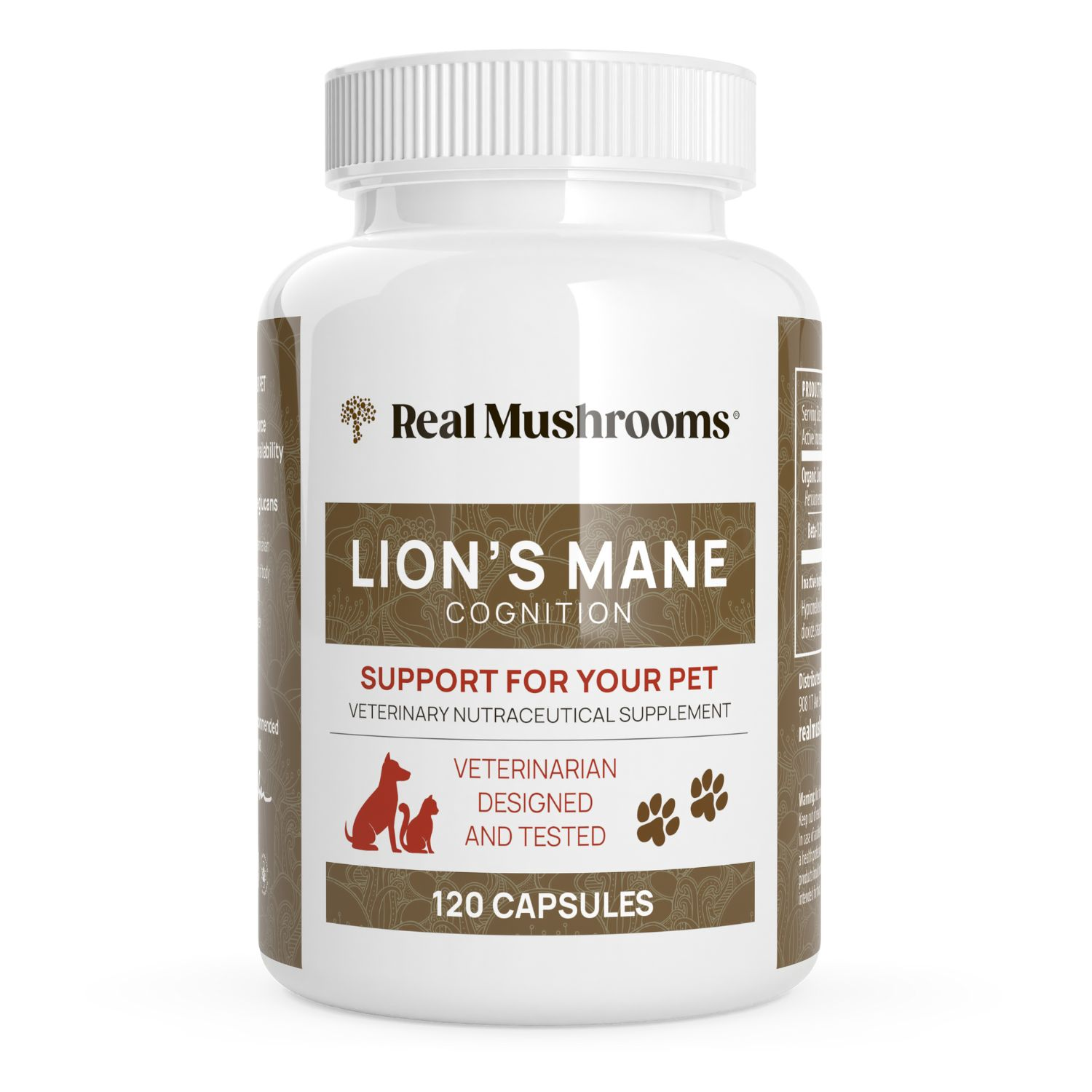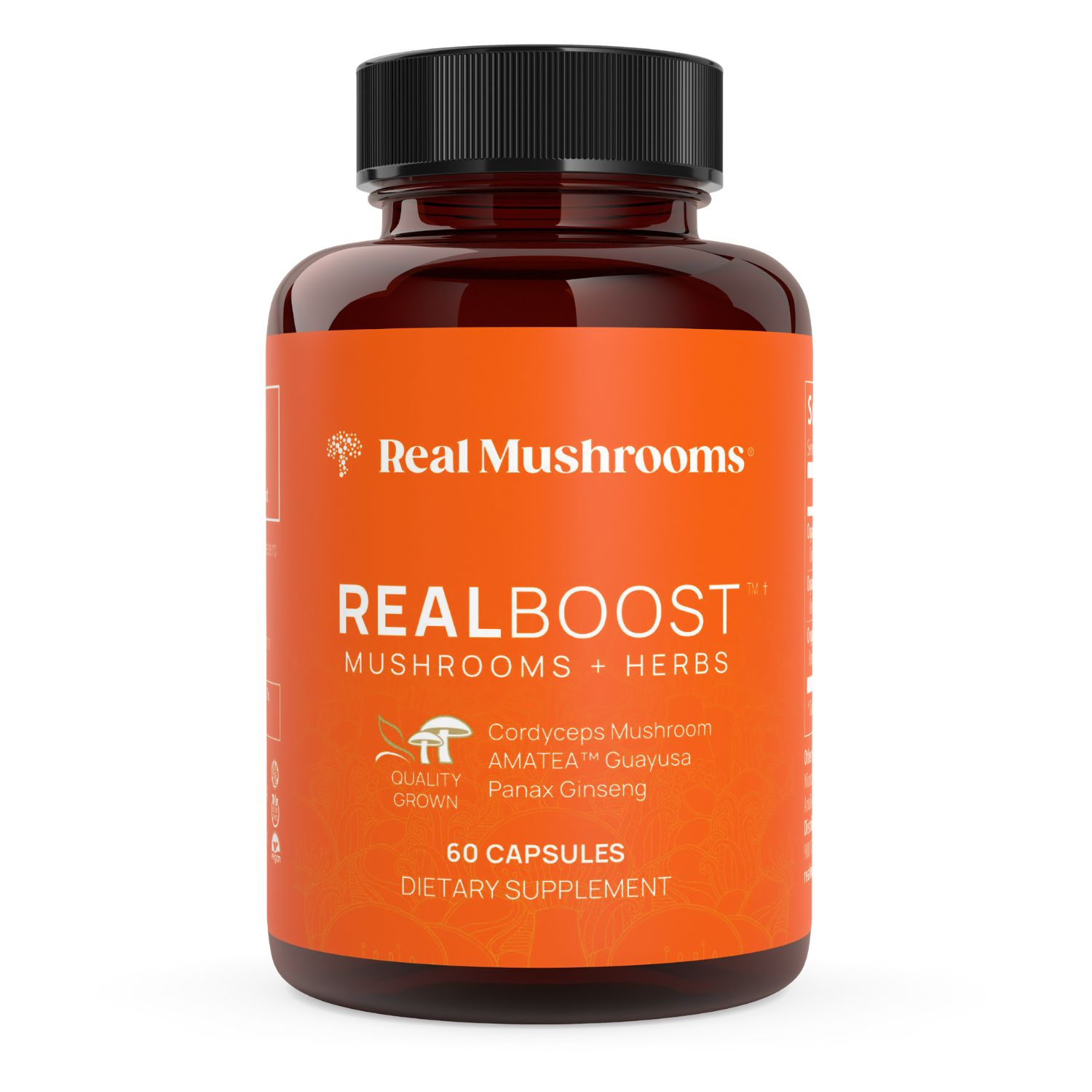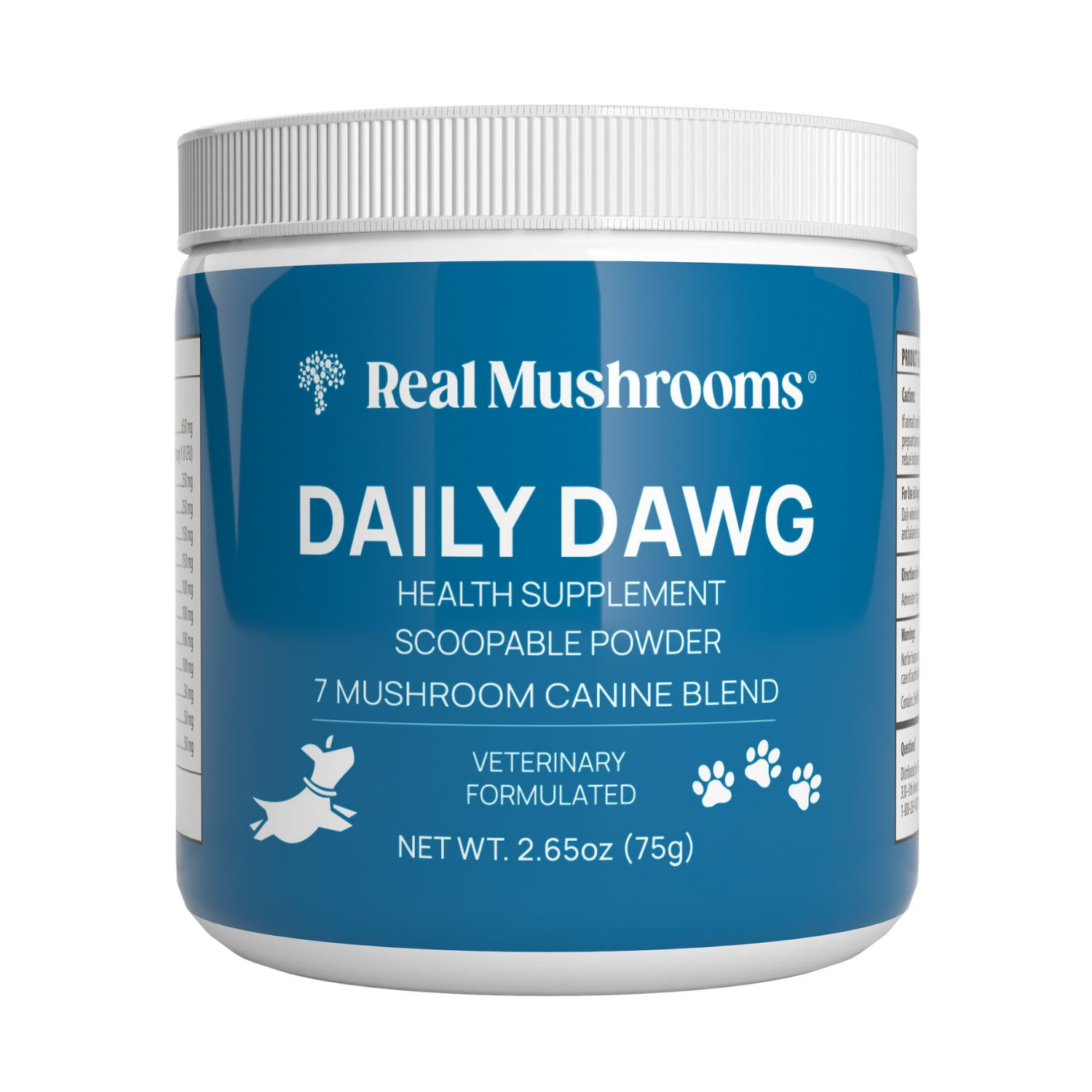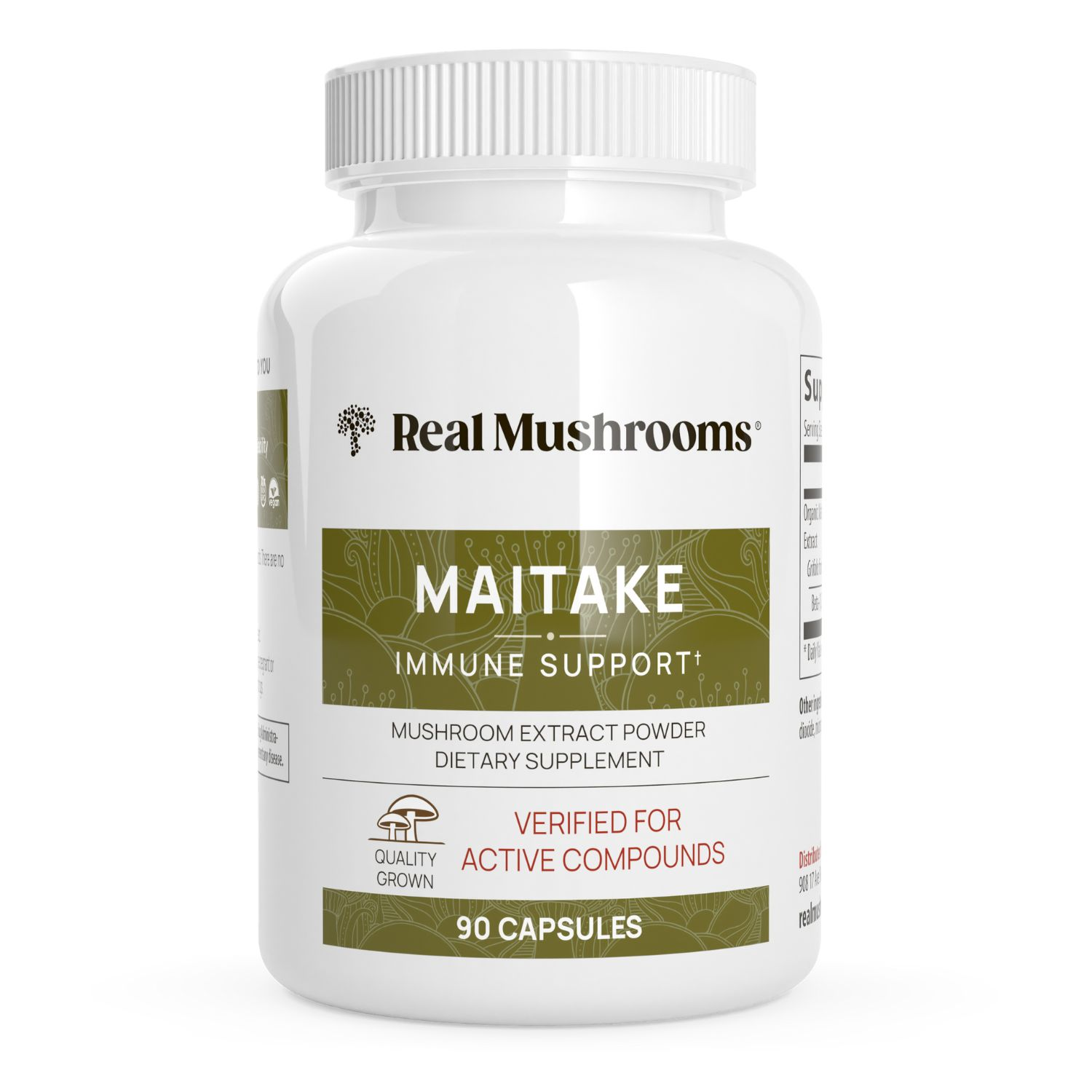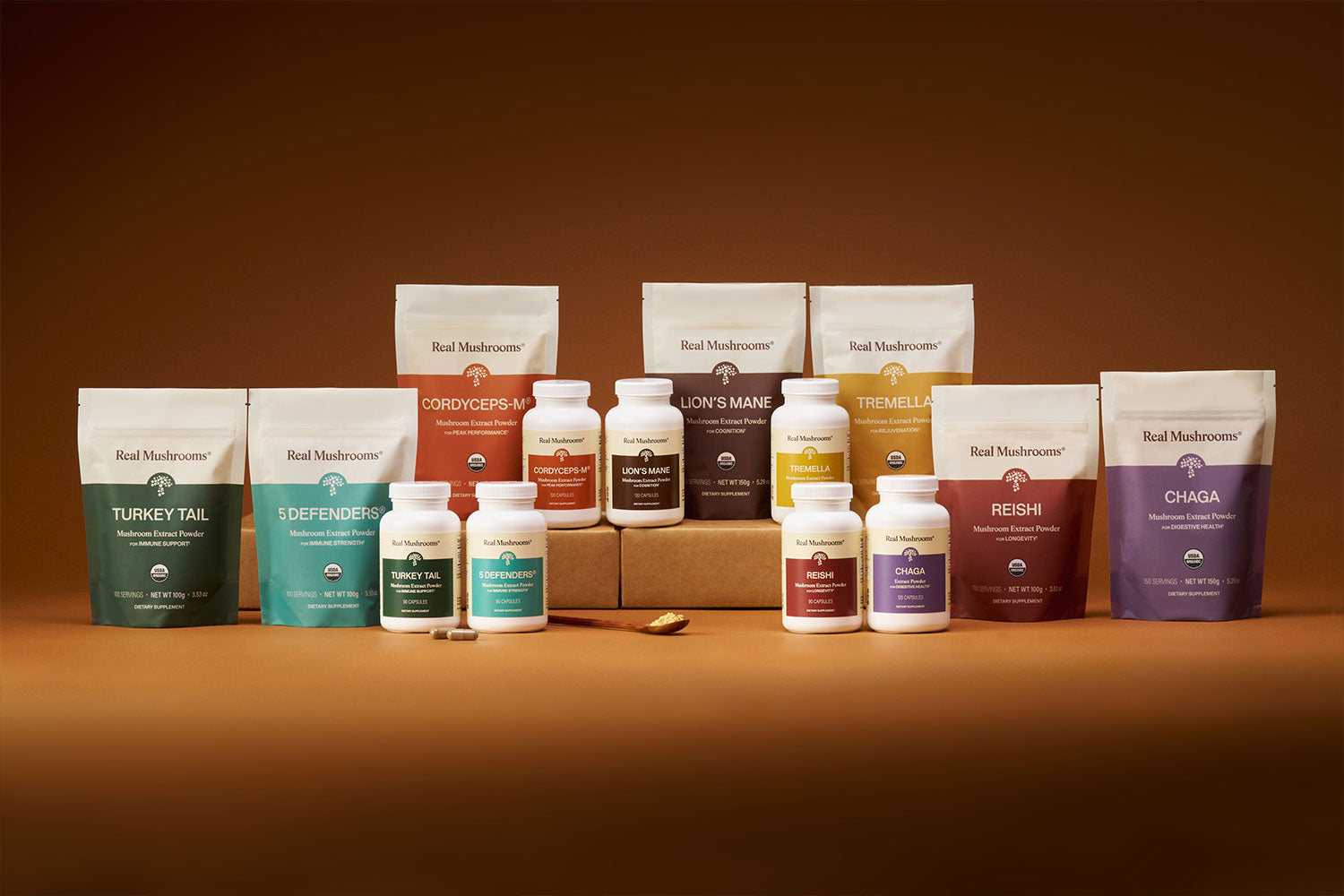Beta Glucans for Dummies: What Mushroom-Curious Readers Need to Know About These Powerful Fungal Compounds
7 minute read

Mushrooms have gone from pizza topping to wellness powerhouse. If you’ve scrolled health blogs or browsed supplement shelves lately, you’ve probably seen them everywhere. But what exactly makes them so good for you?
Mushrooms offer a wide range of health benefits, and one of the most powerful reasons lies in a special type of natural fiber called beta-glucans. These aren’t your average dietary fibers. They’re biological messengers that support communication pathways involved in immune and gut-brain axis functions.
Let’s break it down in plain language.
In This Article
- What Are Beta-Glucans? (And What Are Polysaccharides?)
- Beta-Glucans as Biological Communicators
- Beta-Glucans Are Everywhere… But Not All Are the Same
- What Makes Mushroom Beta-Glucans So Special?
- Most Modern Diets Are Beta-Glucan Deficient
- Not All Mushroom Products Are Created Equal
- Easy Ways to Get More Beta-Glucans Into Your Life
- Why This Mushroom Message Matters
What Are Beta-Glucans? (And What Are Polysaccharides?)
Beta-glucans are a type of polysaccharide, which just means a long chain of sugar molecules. They’re made from glucose (and sometimes other sugars) joined together in repeating patterns:
- Poly = many
- Saccharide = sugar
There are many types of polysaccharides. Some, like alpha-glucans, store energy and include sugars, starch, and glycogen. Others, like cellulose, are non-digestible and act as a structural fiber.
Beta-glucans are different. Instead of storing energy, they send signals to your body, especially your immune system.
These chains (also called polymers or fibers) come in many shapes: straight, coiled, spiral, or even spherical. Their size and structure vary a lot, and that’s part of what gives them such a wide range of biological effects.
Beta-glucans can dissolve in water or stay insoluble. But either way, they don’t provide energy like sugars or starches. Instead, they deliver biological messages that interact with your body. Some beta-glucans are even taken up by immune cells themselves.
They also act as prebiotics, or food for your gut bacteria. These dietary fibers help feed good bacteria in your gut, which then support your immune system, digestion, and even your mood.
Most of these benefits come from fermentation in the gut, where bacteria break down beta-glucans. and produce short-chain fatty acids (SCFAs) like acetate, propionate, and butyrate. The by-products of this beta-glucan fermentation in the gut play an important role in your overall health.
But the real magic of beta-glucans goes beyond the gut.
Beta-Glucans as Biological Communicators
Beta-glucans work in the gut to support healthy immune responses throughout the body. They influence how your cells communicate, how your immune system coordinates its response, and even how your gut, brain, and immune system work together.
In fact, beta-glucans act like a biological language, one that your body’s cells already understand.
The immune response to fungal beta-glucans is shared across many species, from earthworms to humans. That includes bees, shrimp, fish, chickens, mice, monkeys, and people. That means these molecules are part of a long evolutionary history.
Your immune system recognizes beta-glucans as trusted signals, not because they’re dangerous, but because it’s seen them before.
They’ve been part of biology for millions of years. And your body still listens when mushrooms speak.
Beta-Glucans Are Everywhere… But Not All Are the Same

You’ll find beta-glucans in many places:
- Mushrooms and fungi
- Yeast (a type of fungus with different beta-glucans)
- Oats and barley
- Seaweed
- Certain bacteria
In all these organisms, beta-glucans are part of the cell wall, providing strength and structure.
But not all beta-glucans are built the same.
Beta-glucans from different sources have different shapes and effects. Some are linear, like those from oats and barley. Others, like those from mushrooms and yeast, are branched and complex.
These differences matter; they affect how beta-glucans interact with your body.
For example:
- Yeast-derived beta-glucans can strongly stimulate the immune system.
- Mushroom beta-glucans tend to balance or modulate the immune response.
- Cereal beta-glucans help with heart and metabolic health, but don’t directly interact with immune cells.
Beta-glucans have unique structures that affect how the body identifies and responds to them.
What Makes Mushroom Beta-Glucans So Special?
Mushroom (or more accurately, fungal) beta-glucans are special because of their 1-3,1-6 branching structure, a repeating pattern that your immune system has evolved to recognize.
At Real Mushrooms, we clearly label the 1-3,1-6 beta-glucan content on every product.
Your innate immune system has built-in receptors that recognize this structure. These receptors have learned to identify fungal beta-glucans over millions of years.
When your body detects these beta-glucans, say, from a mushroom extract, it receives a set of instructions:
“Get organized. Be more vigilant. Be prepared. Be more accurate. Respond appropriately. Don’t underreact. Don’t overreact.”
This is your immune system’s way of calibrating itself. It’s not about attacking harder; it’s about getting smarter. That’s why we call it immune modulation, not just stimulation.
Leading from the Gut
Much of this immune training happens in your gut, which houses a large portion of your body’s immune system, some estimates say up to 80%.
Specialized immune cells line the gut and constantly monitor what comes through, helping your body stay informed, balanced, and ready to respond.
This allows the immune system to stay informed, alert, and ready.
These effects are made possible through specific receptors on immune cells that help your body detect and recognize fungal beta-glucans and respond appropriately.
Beta-glucans have also been studied for their role in supporting the integrity of the gut lining and maintaining healthy metabolic processes.
By contrast, beta-glucans from oats or barley don’t interact with immune cells in the same way. Their simpler, linear shape doesn’t trigger those immune receptors. But they still provide prebiotic benefits and are well-known for helping with cholesterol and blood sugar control.
Most Modern Diets Are Beta-Glucan Deficient
Unless you regularly eat mushrooms, seaweed, and fermented grains, chances are your diet is low in beta-glucans.
Even though oats and barley are more common in the Western diet, the beta-glucans they contain work differently. They support heart and metabolic health and act as prebiotics, but they don’t train your immune system the same way fungal beta-glucans do.
Yeast-derived beta-glucans might offer some immune benefits, but yeast is a common allergen. Some people are sensitive to it, and others find that yeast beta-glucans can overstimulate their immune system.
That’s why mushroom-derived beta-glucans offer a gentler approach to supporting immune balance.
Beta-glucans aren’t just an optional extra. They’re more like a missing food group, especially when it comes to building resilience and long-term vitality.
And like any healthy habit, consistency is key. Taking beta-glucans regularly supports a balanced immune response.
Not All Mushroom Products Are Created Equal
Here’s the truth: not every mushroom supplement contains meaningful beta-glucans.
Some companies use mushroom extracts, specifically the fruiting body, which is the part we commonly recognize as the mushroom, or pure mycelium extracts. These are backed by centuries of traditional use and supported by modern clinical research.
But many rely on mycelium fermented grain (MFG), also known as mycelium-on-grain. This is a lab-grown product with no historical use and limited clinical support. It’s mostly starch, with very low levels of beta-glucans and actual mycelium. Any benefits these products offer are unlikely to come from beta-glucans.

Many popular products:
- Use mycelium fermented grain instead of thefruiting body or pure mycelium
- List total polysaccharides, but don’t specify how much of that is active beta-glucan
At Real Mushrooms, we do things differently:
- We use 100% fruiting body extracts
- We standardize for 1-3,1-6 beta-glucan content, not just total polysaccharides
- We keep our products free of grain, starch, and unnecessary additives
If you’re looking for mushroom supplements to support immune health, digestion, or overall wellness, transparency and testing matter.
Easy Ways to Get More Beta-Glucans Into Your Life
You don’t need to overhaul your whole diet to start getting the benefits of beta-glucans. Here are a few easy ways to add them into your routine:
- Stir Lion’s Mane powder into your morning coffee
- Sip Reishi tea before bed for relaxation and balance
- Take Turkey Tail capsules daily for gut and immune support
- Add cooked Shiitake or white button mushrooms to stir-fries and soups
- Eat some seaweed regularly
- If your cardiovascular system needs support, consider an oat beta-glucan supplement

Why This Mushroom Message Matters
Beta-glucans are more than just fiber. They are biological messengers that help your body adapt to stress, balance immune responses, and build long-term resilience.
You may not feel their effects overnight. But over time, they feed your inner ecosystem and fine-tune your immune system. That’s the kind of slow, steady health support that truly adds up.
Just like physical training strengthens your muscles, beta-glucans help condition your internal systems, so you can stay adaptive, balanced, and strong.
Whether you’re brand new to functional mushrooms or already using Real Mushrooms products, understanding beta-glucans helps you use them more wisely and intentionally.

Related Articles
- Functional Mushrooms: 7 Kinds and Their Unique Benefits
- How do Mushrooms Support the Immune System
- A Look at the Powerful Benefits of Beta-D-Glucan
- Mushrooms for Gut Health: How Functional Fungi Can Help Digestion
References
- Cerletti, C., Esposito, S., & Iacoviello, L. (2021). Edible mushrooms and beta-glucans: Impact on human health. Nutrients, 13(7), 2195. https://doi.org/10.3390/nu13072195
- De Marco Castro, E., Calder, P. C., & Roche, H. M. (2021). β-1,3/1,6-Glucans and immunity: State of the art and future directions. Molecular Nutrition & Food Research, 65(1), 1901071. https://doi.org/10.1002/mnfr.201901071
- Du, B., Meenu, M., Liu, H., & Xu, B. (2019). A concise review on the molecular structure and function relationship of β-glucan. International Journal of Molecular Sciences, 20(16), 4032. https://doi.org/10.3390/ijms20164032
- Meng, Y., Lyu, F., Xu, X., & Zhang, L. (2020). Recent advances in chain conformation and bioactivities of triple-helix polysaccharides. Biomacromolecules, 21(5), 1653–1677. https://doi.org/10.1021/acs.biomac.9b01644
- Murphy, E. J., Rezoagli, E., Major, I., Rowan, N. J., & Laffey, J. G. (2020). β-Glucan metabolic and immunomodulatory properties and potential for clinical application. Journal of Fungi, 6(4), 356.https://doi.org/10.3390/jof6040356
